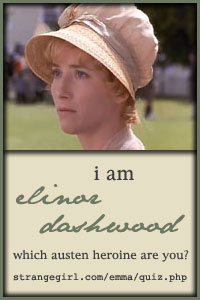
Catholics in England during the period 1558 to 1829 were prohibited by law to practice their faith either in public or private. It was illegal to be Catholic until Parliament finally emancipated Catholics in England in 1829. "The Twelve Days of Christmas" was written in England as one of the "catechism songs" to help young Catholics learn the basics of their faith. In short, it was a coded-message, a memory aid. Since the song sounded like rhyming nonsense, young Catholics could sing the song without fear of imprisonment. The authorities would not know that it was a religious song. "The 12 Days of Christmas" is in a sense an allegory. Each of the items in the song represents something significant to the teachings of the Catholic faith. The hidden meaning of each gift was designed to help Catholic children learn their faith. The better acquainted one is with the Bible, the more these interpretations have significance.
The song goes, "On the first day of Christmas my true love gave to me…"
The "true love" mentioned in the song doesn’t refer to an earthly suitor, but it refers to God Himself. The "me" who receives the presents refers to every baptized person. i.e. the Church.
1st Day:
The partridge in a pear tree is Christ Jesus upon the Cross. In the song, Christ is symbolically presented as a mother partridge because she would feign injury to decoy a predator away from her nestlings. She was even willing to die for them. The tree is the symbol of the fall of the human race through the sin of Adam and Eve. It is also the symbol of its redemption by Jesus Christ on the tree of the Cross.
2nd Day:
The "two turtle doves" refers to the Old and New Testaments.
3rd Day:
The "three French hens" stand for faith, hope and love—the three gifts of the Spirit that abide (1 Corinthians 13).
4th Day:
The "four calling birds" refers to the four evangelists who wrote the Gospels—Matthew, Mark, Luke and John—which sing the song of salvation through Jesus Christ.
5th Day:
The "five golden rings" represents the first five books of the Bible, also called the Jewish Torah: Genesis, Exodus, Leviticus, Numbers and Deuteronomy.
6th Day:
The "six geese a-laying" is the six days of creation.
7th Day:
The "seven swans a-swimming" refers to the seven gifts of the Holy Spirit: wisdom, understanding, counsel, fortitude, knowledge, piety and fear of the Lord.
8th Day:
The "eight maids a milking " reminded children of the eight beatitudes listed in the Sermon on the Mount.
9th Day:
The "nine ladies dancing" were the nine fruits of the Holy Spirit found in Galatians 5:22-23: love, joy, peace, patience, kindness, goodness, faithfulness, gentleness and self control.
10th Day:
The "ten lords a-leaping" represents the Ten Commandments
11th Day:
The "eleven pipers piping" refers to the eleven faithful apostles.
12th Day:
The ‘twelve drummers drumming" were the twelve points of belief expressed in the Apostles’ Creed: belief in God the Father, the Son and the Holy Spirit, that Jesus Christ was born of the Virgin Mary, made man, crucified, died and arose on the third day, that he sits at the right hand of the father and will come again, the resurrection of the dead and life everlasting.
So the next time you hear "the Twelve Days of Christmas" consider how this otherwise non-religious sounding song had its origins in keeping alive the teaching of the Catholic faith.

































6 comments:
As a fellow Catholic, I'm not one to pop other Catholic's balloons. Its a great story, but seems an urban myth as none of the "catechism" is distinct to Catholics only and is equally true for Anglicans and Lutherans.
The melody is known to be of French origin. The lyrics are an English memorization and forfeits game. The 12 stanzas just as likely refer to the 12 months of the year as to any catechism. For example, 5 gold rings can easily refer to May, the fifth month reknown for marriages. See?
God bless... +Timothy
Timothy,
You didn't "pop other Catholic's balloons" since your comment doesn't refute Rita's post. It is well-known that the origins and historical background are in dispute. So what? The point of Rita's post was to suggest some meanings behind a well-recognized tune, and she succeeded. Unless you can prove (with documented, validly-recognized sources) that your suggestions are factual, why should we believe you, and not her?
By the way, you call yourself a "Born-again Christian disciple attending a Bible-believing and Bible-practicing Catholic church." What is that? If you're a Catholic, have the courage to say so. If you're not, don't call yourself a "fellow Catholic" in your posts, despite the church you attend. If you really knew Catholicism well enough to go around criticizing other people's blog posts, you should know that Catholicism is "Bible-believing" and "Bible-practicing", and therefore there'd be no reason to single out your church as unique.
The Catholic Church is the ultimate "Bible Christian" Church. You call yourself a Catholic, and don't know that??
I just love the 12 days of christmas. That was so interesting. I loved reading all of the 12 days.
I'm glad you enjoyed it.
Having some experience and knowlede of many olde English stories and rhymes, your research seems valid in the face of that time period. Mnay of the nursery rhymes that children recite today are politically motivated for their time.
Oh, and if you've ever seen a priest hole, you'd understand how bad it was. The English monarchy was notorious for supressing others beliefs. Remember there were also outlawed tune on outlawed pipes. Tyranny creates a subversive underground of messages and hidden meanings amongst the populace.
Post a Comment